How We Met #1: the Meet Cute
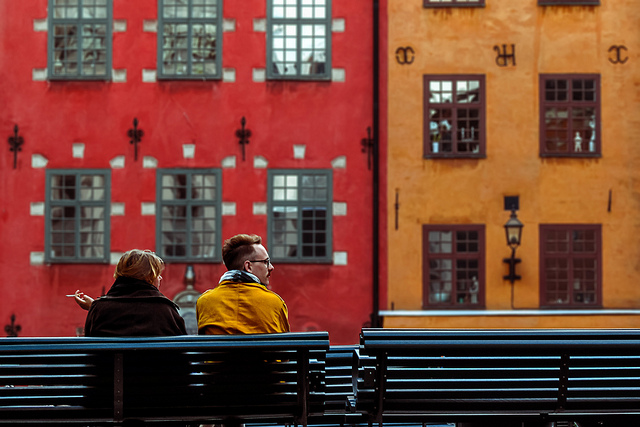
Photo courtesy of Creative Commons/Ruths138
Romantic comedy fans like us know a meet-cute when we see one. It’s when two strangers meet in a charming, unexpected way that in retrospect looks fated. A man and a woman trip and fall into each other on the street. Or sit next to each other on a train. Or strike up a conversation on a fateful elevator ride. Fast-forward three years and they’re married with kids. In romantic comedies, meet-cutes tend to bring together two white, heterosexual strangers through a series of slapstick moments and endearing misunderstandings when neither of them is looking for love. In many cases, the woman is actually engaged to someone else—but the universe has other plans for her.
In real life, of course, this all gets a lot more complicated. Meet-cutes might be cathartic—it’s comforting to think that you’re fated to find love—but we all know that those “how we met” stories edit out the tedious, unflattering initial conflicts that form the foundation of our relationships. And we want to know what couples achieve by leaving those details out.
Isaac and Nobl: “It Was Just… Magic”
We interviewed our friends Isaac and Nobl at their home in San Francisco; their young daughter was fast asleep upstairs, and Isaac periodically interrupted our conversation to go check on her. Isaac and Nobl have been together for nine years now, and their meet-cute is pretty classic.
“There was magic,” said Isaac when he remembered the night they met. “Undoubtable magic.”
Isaac and Nobl met in 2008, when Nobl went on a date with someone else at a hot new restaurant he was managing. It was a pretty casual scene—restaurant-goers wearing yoga pants, polo shirts and baseball caps—and maybe that’s why Isaac noticed Nobl, who walked into the restaurant wearing black gloves and a shiny, red babydoll dress. Isaac bantered with her throughout the evening, in front of her friends and her date. Eventually he gave Nobl his number. They went on a few dates over the next few weeks and started to fall for each other—but Nobl wouldn’t tell Isaac what she did for a living.
When it came up, she was vague. She eventually told Isaac she was an event planner, which wasn’t exactly true. Isaac started to get suspicious. Nobl was a beautiful woman in a baby doll dress who was hung out in the high end of San Francisco and was vague about her work—and he thought that could only mean one thing.
“Initially, when I thought she might be an escort,” Isaac told us, “I was surprised. I don’t attract this kind of woman.”
So when Isaac found out that Nobl was actually an MD-PhD neurologist, “I just melted,” he said.
Nobl told us she was used to lying about her profession. She and her friends found that they had a better track record with men if they omitted it. “Guys would come up to us and say, ‘What do you do?’” she told us. “And we would say, ‘Doctors,’ and they would just run away.”
Nobl and Isaac have been together ever since. And between the random, charming way they met and the comical misunderstandings that followed, the story of how they got together “was totally out of a movie,” Nobl says.
“I mean there were a lot of boring parts in between,” says Nobl, “but you can cut those out, which is what movies do.”
Lucas and Sierra: “It Set the Foundation of Our Relationship”
Isaac and Nobl’s classic meet-cute makes their relationship seem fated, and it can be cathartic to feel that the universe is looking out for you in some way. But like Nobl says, we all know that couples’ “how we met” stories are liberally edited. And some of the most complex and romantic parts of our relationships can be found in the tedium we rarely talk about.
At first, our friends Lucas and Sierra sounded like they had the perfect meet-cute. Lucas said that he fell hard for Sierra when he saw her in class, stalked her for about six months and then… threw up all over her. And then they got together. They’ve been together for a few years now and live in Oakland with their adorably fat cat. But the story of how they met is a lot more complicated.
Lucas first noticed Sierra in a 2012 election class at the University of San Francisco. “I made it my mission to find ways to be near her,” he says, “without her realizing I was facilitating it.” Lucas is also transgender, and he had just started his transition. “I had only been on hormones for like two months, so my voice was three and a half octaves higher than it is now,” he remembers.
Sierra wasn’t particularly interested in dating anyone, and Lucas was one of the first trans people that she had ever met. “I didn’t even think about gender critically, it didn’t cross my mind,” she told us. “I feel like I’d never even heard the word trans before.”
So over the next eight months, Lucas embarked on an awkward, eight-month campaign to win Sierra over. He offered her weed and walked her home from class, even though he lived in the opposite direction. He declared his love to her while they watched Arrested Development. And yes, he threw up on her at a Super Bowl party—then biked drunk with her through San Francisco and declared his love for her again. And each time he asked her out she said no.
After a few months, Lucas started to give up. “I was like, ‘This girl is playing a lot of games,’” he says, “’and I’m not sure of how to win.’”
Sierra and Lucas both changed dramatically over the course of these eight months. Lucas’ transition had put him in an emotionally vulnerable place, he said, and Sierra was trying to figure out what it meant for her. “It was the first time I’d ever thought critically about sexuality, about gender, about all of that stuff,” she said.
They finally started dating properly after graduation. And while their courtship may have been meandering, Lucas and Sierra say they wouldn’t have it any other way.
“To me it really set the foundation so we could have this kind of relationship,” Sierra says.
Falling in love can be a personal and messy process. There are all the doubts and weird tests that couples put each other through, the personal growth and compromises at the foundation of all great relationships. For Lucas & Sierra, and Isaac & Nobl, the full story of how they met is a little too private to tell someone at a cocktail party. And that’s where the meet-cute comes in. It’s a romantic trope that makes your story a little shorter and a little sweeter, with just a touch of magic
Landmark Episode 1: The Library of the Dead
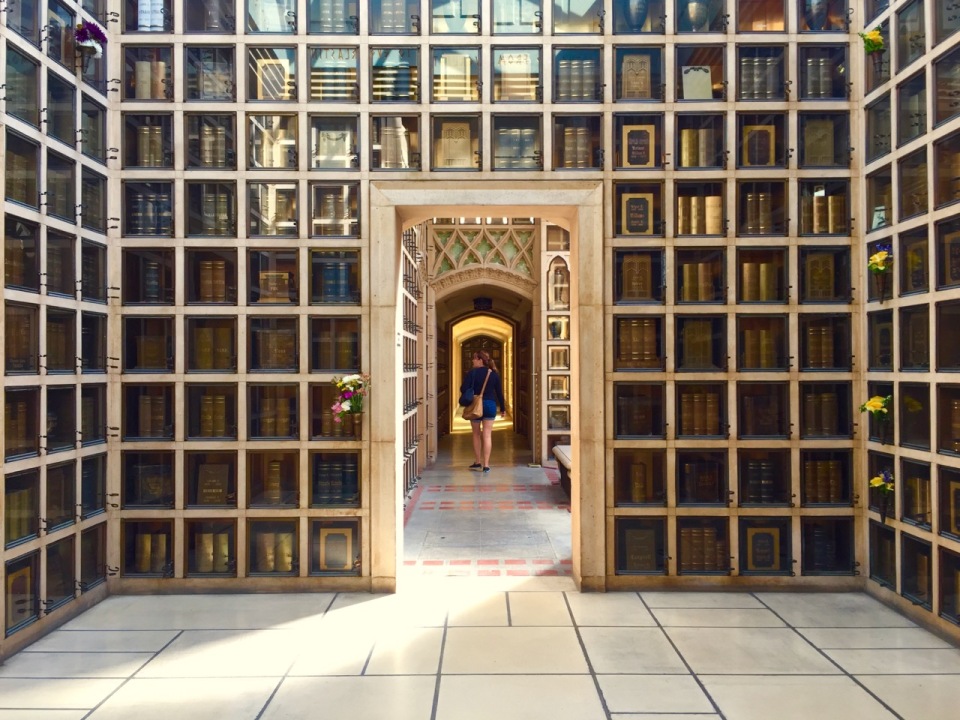
The Chapel of the Chimes in Oakland, California is a world-famous columbarium—a mausoleum for cremated remains. Photo: Graelyn Brashear
In Oakland, California’s Piedmont neighborhood, there’s a place where the dead are housed in urns resembling ornate books neatly stacked on shelves. The dearly departed are organized like there’s some dead Dewey Decimal System. Welcome to the Chapel of the Chimes, a columbarium built in 1909 that featured the world’s first electric crematorium.
It’s a piece of California history that bears the imprint of a master: Julia Morgan, famed architect of William Randolph Hearst’s San Simeon castle, was tapped to renovate the building in 1928, and it bears her signature Moorish-Gothic style.
But to really understand the history of the place, you have to go back further. At the time of its construction, cremation was still a relatively new practice in the U.S. For much of Western history, the idea of burning your loved one after death was abhorrent, sacrilegious—and illegal. But ideas started changing in the late 1800s, when doctors began warning of public health problems from overcrowded cemeteries too close to population centers. By the early 1900s, “cremation societies” were springing up to advocate for a more sanitary alternative to burial. Pay a little fee, join the club, and you, too, could enjoy a new way of death. The groups were especially popular in California, where some societies sprung for elaborate communal structures for the internment of their members’ ashes.
The Chapel of the Chimes is probably the most famous of them all, and it’s easy to see why. When the sun shines through the Chapel’s retractable ceiling windows, the places looks otherworldly. Glistening glass shelves of book-shaped urns reach from floor to ceiling. Small photos and mementos left by loved ones are occasionally seen on the shelves. A labyrinthine floor plan leads you in and out of rooms and courtyards, some tiny, some massive, all windowless but bathed in sunlight from above. Caged canaries are often heard singing throughout.
Many of Oakland’s notable past and present citizens lie within the Chapel of the Chimes, among them former Oakland Raiders owner Al Davis and musician John Lee Hooker. And it’s a place for everyone. Public concerts regularly fill the space with music. Art school students visit often to sketch the ornate architecture and many of the general public come through to sit with their love ones or to simply find some solitude.
Join us as we explore the Chapel in the first episode of Landmark, a new podcast tour of weird history and beautiful places around the San Francisco Bay Area. Your guides Lacy, Graelyn and Gabe are a trio of nerds who have trouble walking past historical plaques without stopping, and are here to share discoveries of people, places and things you might not be aware of. In this episode, we’ll walk you through the Chapel of the Chime’s echoing chambers and its strange history.
– Lacy Jane Roberts, Graelyn Brashear and Gabriel Tolliver
In Search of Hitchcock
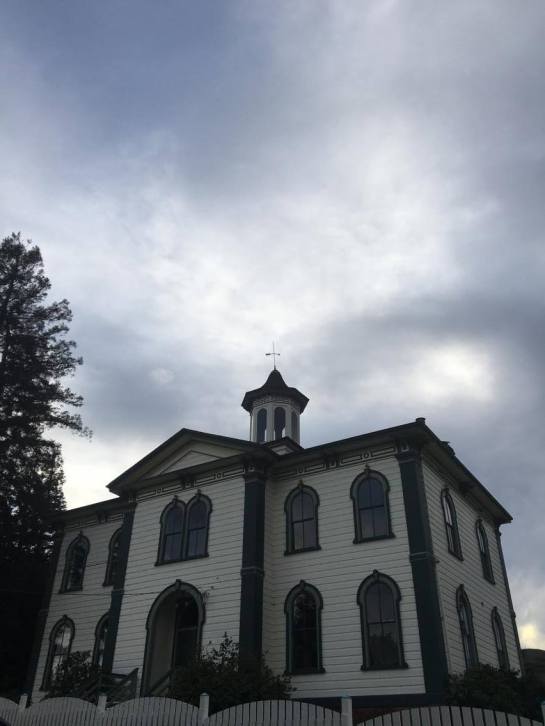
The Potter School in Bodega Bay (photo courtesy of Abner Hauge)
Welcome to Backdrop! The Podcast that takes you to the scenes of Hollywood’s most iconic movies.
Iconic films are immortal, and can inspire audiences for generations. A film’s setting is like an uncredited character. You can’t forget the impact of the isolated Bates motel in Psycho or the foggy Golden Gate Bridge in Vertigo. Physical settings almost behave like a human character and can give insight into the central character’s thoughts.
The Birds is an American feature film directed by Alfred Hitchcock based on the 1952 story by Daphne Du Maurier It focuses on a series of inexplicable violent bird attacks in a small coastal village over the course of a few days.
The film stars Rod Taylor and Tippi Hedren, with Jessica Tandy, Veronica Cartwright, and Suzanne Pleshette.
Daphne DuMaurier’s original story took place in an English seashore village, but after filming his thriller “Shadow of A Doubt” in Santa Rosa in 1948, Hitchcock came back to the area in 1961 to shoot the film.
We spend one day in Bodega Bay, a charming fishing village along the coast, 60 miles north of San Francisco. We talk to local townspeople to discern the impact of the movie on the town in the present day.
Michael Famie owns the Bodega Country Store, which has over 400 items of Hitchcock Memorabilia, one of the largest in the world. Mr. Famie gives us a walking tour of Bodega and visit St. Theresa’s Church, which was famously shot by Ansel Adams. Our tour concluded at Potter School, the setting of the movie’s famous attack scene, which is also listed on America’s Register of Haunted Places.
Music: Hitchcock Etudes 2013 – Schoolhouse Etude – Nicole Lizee
How We Met #1: the Meet Cute
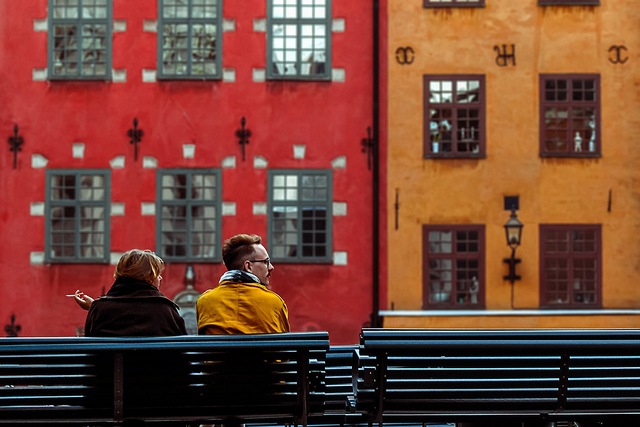
Photo courtesy of Creative Commons/Ruths138
Welcome to “How We Met,” a podcast where we go deep into romantic comedy tropes, break them apart and then reassess them. In our first episode we decided to break down the meet cute—what it is, why we find it romantic and what power it holds in our relationships.
We all know a meet cute when we see one. It’s when two strangers meet by chance, offline and in a unexpected way that in retrospect looks fated. A man and a woman trip and fall into each other on the street. Or sit next to each other on a train. Or strike up a conversation on a fateful elevator ride. Fast forward three years and they’re married with kids. In romantic comedies, meet cutes bring together two white, heterosexual strangers through a series of slapstick moments and endearing misunderstandings when neither of them is looking for love. In many cases, the woman is actually engaged to someone else—but the universe has other plans for her.
In real life, of course, this all gets a lot more complicated. Meet cutes might be cathartic—it’s comforting to think that you’re fated to find love—but we all know that those “how we met” stories edit out the tedious, unflattering initial conflicts that form the foundation of our relationships. And we want to know exactly what kinds of telling details couples leave out.
So in this episode we talked to two couples we’re friends with. Isaac and Nobl’s meet cute is classic—she was on a date with someone else, he thought she was an escort. They live in San Francisco and have been together for nine years; when we interviewed them, Isaac had to sneak out occasionally to check on their young daughter, who was fast asleep upstairs. Our friends Lucas and Sierra sound like they have a meet cute at first but… they really don’t. They’ve been together for several years and live in Oakland with their adorably fat cat. Both couples maintain that the way they met each other strengthened their relationship and wouldn’t have it any other way.
Relocated #1: Call Me Sheila

Photo Courtesy of Sheila Magana
On a January morning in 2001, Sheila Magana walked out of her parent’s house in Michoacán, Mexico, with a suitcase in her hand. Magana, then 16, hadn’t ever lived away from her hometown. Through the back window of a city bus, she watched as her mother stood outside their home sobbing.
Magana hasn’t seen her mother since.
Born Agustín, Magana says that she always felt different as a child. By the time Magana turned eight years old, she knew that she was attracted to boys. After she became a teenager, Magana said that she still didn’t have the language to describe her feelings or identity.
“I didn’t know what being gay was, I didn’t know what transsexual was, I didn’t know what transgender was,” Magana said.
That all changed when Magana left Mexico. Her journey from the front door of her parent’s home in Michoacán led to a crossing over the U.S.-Mexico border with a smuggler and ultimately to a cousin’s house in Santa Rosa, California.
Several years after she left Mexico, Magana finally found the words to describe who she is today: a transsexual woman who was recently granted asylum in the United States.
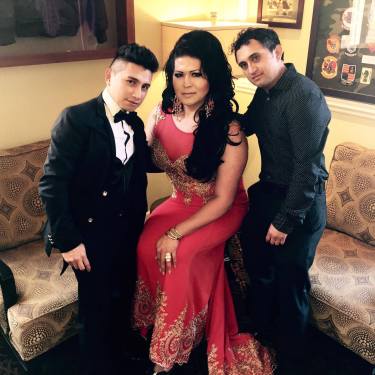
Photo Courtesy of Sheila Magana
Magana, 32, is a six-foot-tall Mary Kay representative who lives in Oakland. She remembers that when she would play Papa and Mama as a kid with her friends back in Michoacán she always wanted to be the mother. Kids made fun of Magana because she walked differently and had a higher voice than other boys. Growing up in Mexico people called Magana rarito—a little strange.
“I started to play with my mom’s clothes, with the skirts, with the blouses,” Magana said. “When Selena died, I painted my lips red and danced to songs like Amor Prohibido. And I loved it.”
Her father didn’t like how Magana acted as a kid. Because she wasn’t a “normal” boy Magana’s father beat her, often waking her up in the middle of the night with blows.
Magana eventually ran away from her father and stayed with an uncle. But her new home offered little sense of refuge. In the middle of the night, Magana said that her uncle would wake her up and sexually abuse her.
“Instead of helping me, he just took advantage of my situation,” Magana said.
Life in Mexico can be extremely dangerous for LGBTQ people, who often become victims of gender-based violence and even hate crimes. The country has one of the world’s highest rates of transphobic violence. At least 194 transgender people have been killed in Mexico, according to a report published by the human rights organization Transgender Europe.
And yet moving to the United States didn’t immediately provide Magana with a sense of safety either. Family members in California disowned Magana after she started hormonal treatment to become a woman. A coworker hooked Magana on drugs and she soon wound up homeless and living in a dump near San Jose.
“I wanted to kill myself back then,” Magana said. “I hadn’t spoken with my mother in two years.”
Magana eventually went to rehab for a year in Oakland and has been sober for almost a decade. She settled in the East Bay and received asylum last year with the help of the East Bay Sanctuary Covenant (EBSC), a non-profit organization that was founded in 1982.
Located in downtown Berkeley, EBSC helps members of the immigrant community attain legal status in the United States. The organization launched the Affirmative Asylum program over two decades ago, filing 2,500 asylum cases that have had nearly a hundred percent success rate.
Magana is one of the many people that EBSC has helped to received asylum. She will receive U.S. residency in the next few months.
When she becomes a resident, Magana plans to return to Mexico to visit her mother and father. Her parents have accepted her for who she is and want to love her as a daughter.
From her new home in Oakland, Magana sends money home to her parents to support them in their old age.
“And when I wire them money, I sign my name as Sheila Magana,” she said.
Written and produced by Levi Bridges, Manjula Varghese and Marylee Williams
Special thanks to Sheila Magana, The East Bay Sanctuary Covenant, Mariela Patron and Joshua Johnson.
Music: Selena “Biddi Biddi Bom Bom”
The Side of the Road, Episode 1: La Gleize
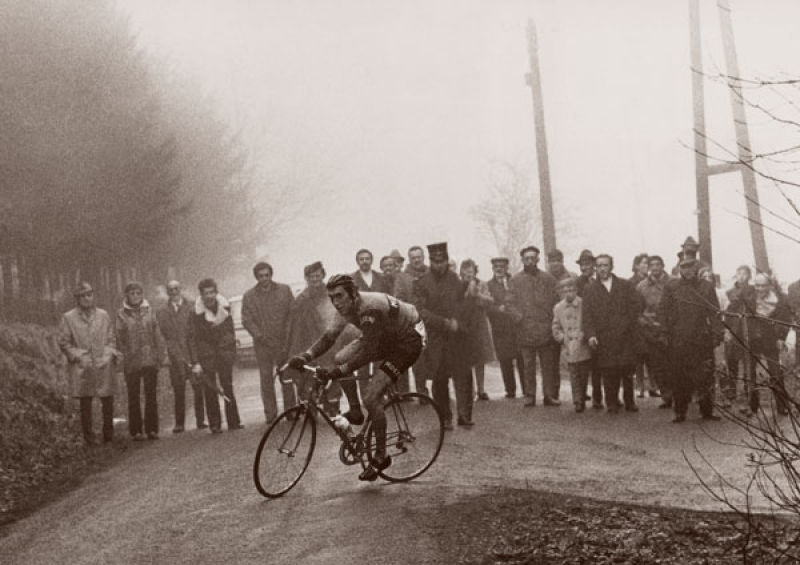
Eddy Merckx summits The Stockeu in 1971. Photo courtesy of classicvintagecycling
The sport of cycling has several huge one-day races that it regards as monuments. If you go watch one, here’s what you’ll see: thousands of people, covering the roads and any climb. They stretch their necks to peer over each other and wait for the racers to approach, and then suddenly, they part like the Red Sea as the riders speed towards them up the climbs. The racer’s mouths are agape, heaving air, battling each other. The fans scream for their favorite riders, sometimes trying to run alongside them, urging them on.
Among the monuments, the oldest is Liege-Bastogne-Liege, or “La Doyenne”, which means, “The Old Lady” or “The Old One”. The race is located in Southern Belgium, a region called Wallonia. But the race’s most exciting terrain lies within the Ardennes forest, where unpredictable weather and steep climbs await. The roughly 120-mile race had humble beginnings as an amateur race, and was organized as a publicity stunt for the newspaper, L’Expresse. It took years for the race to catch fire, and only after a few foreign riders won the race, did it get added to the professional cycling calendar. From then on, its reputation grew, and the length of the race was extended to 160 miles. According to a 2014 poll of all of the world’s top-tier professional cyclists, Liege-Bastogne-Liege is not only the hardest race of the year, but the most widely loved.
The main reason that the race became so popular is, in part, due to the exploits of Eddy Merckx, the greatest cyclist of all time. Images of him riding alone over the misty hilltops of the Ardennes Forest captured the public’s imagination in 1969. By the end of his career, Merckx had won the race a record five times, which has not been challenged ever since. According to a 2014 poll of top tier professional cyclists, Liege-Bastogne-Liege is their favorite race. Nowhere else do they go so deep, for one day, just to stay in contention. Laurens Ten Dam, a Dutch pro who is one of the most experienced riders still racing, remembers one year, when he finished in the front group, in 34th, “I was so sick after the race. You are too tired to eat, the only thing I could do is lay there. Hours later, our team masseur gave me some chips, and I started to eat slowly, and came back to life. Pretty soon I had eaten two big bags.”
The Ardennes Forest is not just a place where the best cyclists in the world do battle every year, it is also where the Battle of the Bulge took place. In 1944, during World War II, the Americans and British had forced the Germans to retreat back into their country. A stalemate briefly settled, and news reports showed that the Americans were strengthening their supply lines to their troops, to ready for an all-out assault towards Berlin. Hitler used this brief respite to raise an army outfitted with enormous Panzer tanks. His idea was to use the fighting force, largely comprised of the Nazi fanatic soldiers, the SS, to break through the Allied lines and cut off their supply lines by taking the crucial port city of Antwerp. Hitler’s hope was to force a negotiated peace with the Americans and British if he could push them back. The plan necessitated that Germany attack through the most lightly defended portion of the Allied frontlines, in order to capitalize on Hitler’s “blitzkrieg”, or lightning attack, strategy. The thinly defended area of his choosing happened to be the Ardennes forest.
Liege-Bastogne-Liege and the Battle of the Bulge occupy the same territory, and their histories comingle through the people who live in the area and the stories they tell. Gerard Gregoire is one survivor who lives nearby the race course and listens the coverage on the radio every year. He also has memories of Eddy Merckx early exploits. For people like Gerard Gregoire, Liege-Bastogne-Liege is like a perennial thread, woven across his life, linking the bad times and the good. It’s a memorial of sorts, an exciting spectacle on the one hand, and a reminder of the Ardennes’ troubled past, on the other. Alongside the course, there are churches, bakeries, pastures, forests, and castles, all containing deep meaning for different people, and their stories unlock the hidden meaning in everything that surrounds the race.
The Joke #2 D.C. Benny
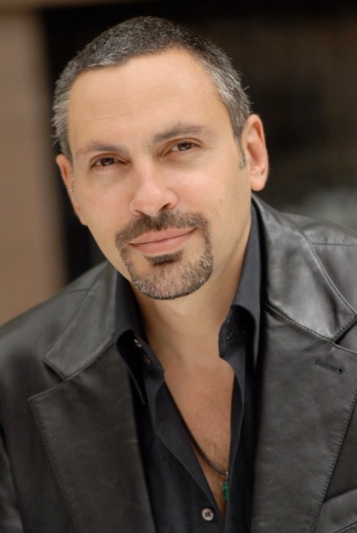
photo courtesy of dcbenny.com
Biscuits
For the second episode of The Joke, I caught up with one of my comedy heroes, D.C. Benny about his signature joke, Biscuits.
I first saw D.C. a few years ago while scrolling through YouTube. A video popped up titled, “White Boy Rips it at the Apollo”, I had to click on it.
The white boy was D.C. Benny, and the Apollo is the legendary theater in Harlem; a cathedral to the greatest African American artists, with a notoriously ruthless crowd. There’s another video of the audience there booing a young Lauryn Hill off the stage at a talent show.
True to the video’s title, D.C. rips it. Within seconds of taking the stage, he has the entire audience in stitches as he performs characters with a range of accents and dialects: Chinese, German and Jamaican.
D.C. says his quick delivery and character driven jokes are no accident. His style was shaped by the black comedy circuit, where he broke in as a performer.
Benny grew up in Washington D.C. (hence his stage name) and says he had a diverse group of friends and was comfortable performing in front of black audiences. When he came to New York in the 80’s, he couldn’t get stage time at mainstream comedy clubs downtown, so he started performing at more “urban” rooms in Harlem and the Bronx.
Benny says, “as a white comedian in the black rooms especially starting out, I couldn’t leave any time for the crowd to breathe really, it was just concentrated laughs. There wasn’t time for anyone to doubt that you were funny.”
The uptown clubs were invaluable training grounds for Benny as he performed alongside comedy greats like Bernie Mac, Steve Harvey and Tracy Morgan.
On a walk with his wife one day, D.C. shared a painfully embarrassing story from his high school prom. Sure, we all have cringe-worthy prom stories, but D.C.’s might top them all.
Short version: an intimidating high school drug dealer forced D.C. to go to prom with his sister, an overweight cheerleader after a misunderstanding over some biscuits at the local Popeye’s Chicken…..you’ll have to listen to the episode to see how it plays out.
For years, the story was just a painful memory for D.C., but his wife encouraged him to tell the story on stage. He relives the whole tale with unique and hilarious voices for all the characters-including the drug dealer “no neck” with a lisp.
The joke became of his signature pieces, and people frequently shout, “Biscuits,” when he performs all over the country. But it’s controversial as well.
With lines touching on race, gender and body type, there’s a high potential for people to get offended.
I asked D.C specifically about the complexity and sensitivity of playing black and asian characters. I wanted to know if he ever offends people or gets negative reactions from the crowd. Benny says, “it’s a fine line to walk but, I have this thing they’re not quite sure what my background is so that gives me a little bit of leeway, an extra five percent, and then I try and portray these characters as accurately as possible.”
The joke also completely changed D.C.’s style from doing fast paced characters to delving into more personal and sometimes painful narratives.
Benny says, “This was kind of the turning point for me, it’s really not about characters, it’s about all the awkward stuff that’s happened to me in my life….once I told that story, it was like, ‘Wow, this is where I want to go.’”
Tune in to hear a great joke about a prom gone wrong, and the story of a desperate man trying to escape it.
Dear Craig #1: Love in the Time of Craigslist
By Levi Bridges and Graelyn Brashear
In the middle of the night last Labor Day, Ava Williams was 10 drinks deep and cuddled up on her couch next to a guy she just met at the bar.
Settled in next to her potential paramour, Ava, 30, felt enraptured by that magical first flickering of attraction. The feeling distracted her from the inevitable hangover to come, the logistics of making it to work the next day and the fact that she had just come home with a complete stranger.
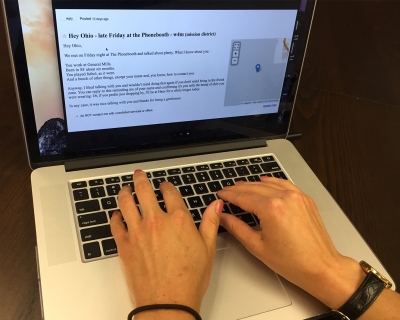
Over 50 million Americans have tried some form of online dating (Photo by Levi Bridges)
It also helped Ava forget about her boyfriend, who was out of town on a business trip.
“He’s a really good, solid dude,” Ava said about her current boyfriend. “But I generally feel not well understood. And I feel like I should be better understood at this point in our relationship.”
Ava said she didn’t cheat on her boyfriend. She just cozied up with the guy from the bar on her couch, had a deep conversation and fell asleep.
Reality kicked in the next morning. Ava showed the man to the door. They did not exchange numbers. Ava barely remembers what he looks like.
Now she wants to find him.
“I have thought about posting an actual printed flyer right in front of the bar,” Ava said, “like you would for a missing cat. Like, ‘Met a guy! Here! Last Week! Here’s a number to call.’”
Instead, she posted on Craigslist’s Missed Connections.
The original online dating
Missed Connections, a strange and sometimes beautiful back eddy of the Internet, has become the de facto place that people all over the country go when they hope to somehow beat the odds and find that random stranger who caught their eye on the subway or supermarket checkout line. Hundreds, maybe thousands of these posts go live every day: I saw you on the bus. We were waiting in line together at the supermarket. You’re beautiful. Let’s meet.
Ironically, the Missed Connections pages have also become an online forum that attracts people who have become fed up with online dating, which has transformed how we meet and fall in love. An estimated 50 million Americans, roughly 15 percent of the adult population of the United States, have tried using a dating site. Online dating now generates $1.8 billion a year.
But not everyone is convinced that swiping right can buy happiness. The people we spoke with as we launched Dear Craig—a new podcast about love and the Internet—said they felt dating apps were killing the magic of meeting people. They longed for that electric experience of a serendipitous meeting at a party, on the train or the back row of English class.
This feeling of missing out on something important by turning to online dating was a big part of why Ava Williams ended up back at her apartment with a guy she picked up at the bar.
Bringing back the magic
For Daniel Quintana, another 30-year-old from San Francisco, that same sense of interpersonal stalemate ended on public transit.
Quintana gave up on online dating last spring after a few years of using a bunch of apps. He felt like dating had infiltrated his unromantic world, mainly because men he went on dates with naturally become Facebook friends. So Quintana went offline completely, deleting all his apps and even deactivating his Facebook account.
Several months passed before Quintana felt a spark for someone again. It happened with a guy he made eye contact with on the L train on his commute home to the Sunset one evening. The two glanced back and forth and smiled the whole ride, but Quintana did not get his number. The experience was so refreshing and fun that he posted a Missed Connection.
He described the process of posting on Craigslist as feeling way more natural than messaging people on dating apps.
“Before I was kind of forcing this inorganic process to happen,” Quintana said, “and I think in some way I was kind of blaming the websites.”
Missed Connections might be the modern antidote to online dating, but there is far more to it than pithy posts describing fleeting attraction. You’ll also find electronic epistles unloading grievances to the universe about an unnamed ex, follow-ups to conversations that started on dating apps and free sexual services.
There is a reason that Missed Connections have maintained a home on the Craigslist website that has remained largely unchanged for a decade and a half. Perusing these posts inspires a mixed sense of both voyeurism and solidarity, a window into how strangers experience that first inkling of attraction for another human being—and the enigmatic possibility of finding love—that most people have felt at some point in their lives.
For people like Ava and Daniel, love in the time of Craigslist has become a sort of battle between remaining patient for the right one to come along and the temptation to search for that person on the Internet in the meantime.
But for many older millenials thinking about settling down, crossing paths with someone in real life still has more appeal.
Ava compared online dating with just naturally hitting it off with someone at the bar as similar to walking through a bookstore.
“It’s the difference between reading the back of a book,” Ava said, “and deciding to read it vs. picking one up off the shelf and just really liking the story without knowing anything about it.”
Ava paused for a moment, reflecting on the experience of meeting someone offline.
“That’s magic,” she said.
Some names in this story have been changed.
Written and produced by Levi Bridges and Graelyn Brashear. Special thanks to Lacy Jane Roberts, Matt Beagle, Gabriel Tolliver, Katherine Rose and Joshua Johnson.
Music: Tres Tristes’ DBronx Tanz, Planta Baja and Ojos Negros.
Dr. Doe Sexplains It All
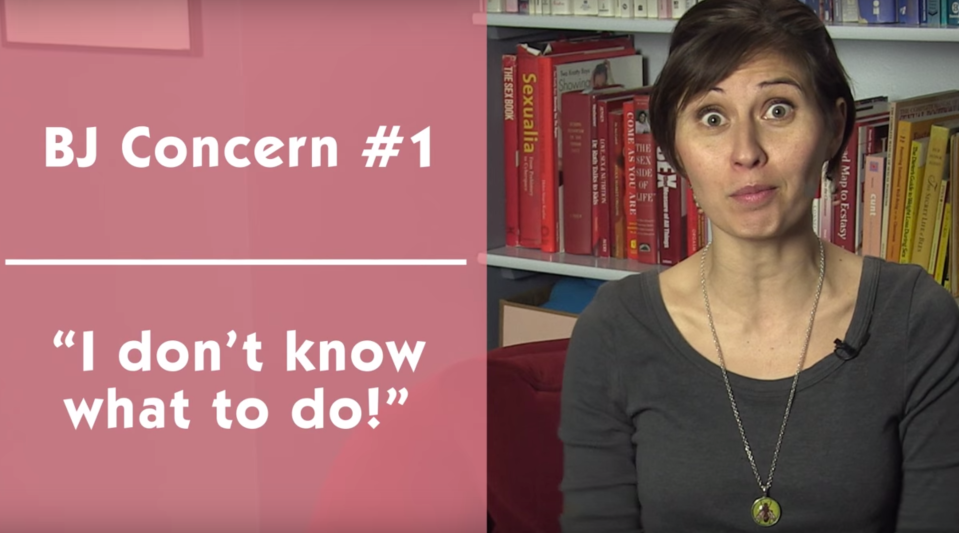
Let’s get it on, copulate, intercourse, coitus, making love, making whoopee, knocking boots, bumping uglies. — all euphemism for sex, an act that historical has played a major role in humanity’s survival – yet do we know what we are doing?
Dr. Lindsey Doe, a clinical sexologist has dedicated her life to studying human sexuality and sharing her knowledge with others through her youtube series titled, “Sexplanations.”
Having grown up on a boarding school campus, Doe says, she was attracted to knowledge about sexuality at an early age, and discovered that “a lot of people didn’t have a lot of knowledge about [sex] so I could build that niche.”
Doe explained that her parents were very supportive of her curiosity. Not that they encouraged her to masturbate, rather they “encouraged me to see masturbation as a normal healthy behavior,” Doe says. With a supportive home environment she was allowed to ask questions.
Her interest in sexuality led her to pursue a degree in Health and Human performance and then later received her doctorate in Human sexuality.
Fortunately for Doe, it was when Hank of the Hank and John Green duo which the internet world has nicknamed the vlogbrothers attended Doe’s human sexuality class, and saw her teach her students did the idea of a youtube series dedicated to sexology come about and “Sexplanations” came to be.
Doe, says her youtube series allows her to escape her real life, stating that Sexplanations allows her to talk about one of her favorite subjects — sex. Talking about sex for her series reminds her “about all the cool things on the planet,” Doe says.
With her youtube series reaching two hundred and twenty countries, the youtube series covers topics anywhere from Toy Vaginas to Age of Consent. Sexplanations releases one episode every week. Doe says she is dedicated to creating a sex-positive environment explaining that “Sex positivity is holding space for other expressions of sexuality.”
The Joke #1: Marilyn Pittman
We created this podcast to explore the stories behind jokes. Comedians write and perform jokes in a particular time and place and studying the life and death of a joke reveals the short window of time where it is current, edgy, yet appropriate enough to get laughs. A joke is more than just a laugh line, it is a time capsule.
You wouldn’t necessarily think this about Marilyn Pittman’s joke, The Joy of Lesbian Sex, which includes a demonstration of foreplay with a hair dryer, but hear us out….
Marilyn Pittman moved to San Francisco in the 1980’s to become a stand-up comedian. With comics like Robin Williams, Dana Carvey, Ellen DeGeneres and Margaret Cho on stage every night, Pittman refers to 1980’s San Francisco as, “comedy mecca.”
Except it wasn’t the promised land for everyone. Pittman has always been an openly gay performer. She says, despite San Francisco’s identity as a global capital of gay culture, the comedy world was segregated.
There were few openly gay comedians and even fewer opportunities for them to perform in front of mainstream audiences. Even Ellen was in the closet back then.
Pittman says there was pressure to conform to reach a bigger audience, “I would try not to be gay. One time I got up and said ‘my boyfriend’ and it was just not funny. So I kind of realized I was only funny if I was honest.”
Pittman wrote material specific to her experience, but was resigned to performing for gay audiences at fringe clubs.
Then, she discovered a book that would change the course of her career.
While lounging on a Saturday, a friend of Marilyn’s produced the 1978 book, “The Joy of Lesbian Sex,” written by Emily L. Sisley and Bertha Harris. The book is billed as, “a tender and liberated guide to the pleasures and problems of the lesbian lifestyle,” but Pittman knew it was comic gold.
“We start flipping through this book. And we’re just falling over laughing at how ridiculous this book is, and how stupid it is and how goofy and surreal it is.”
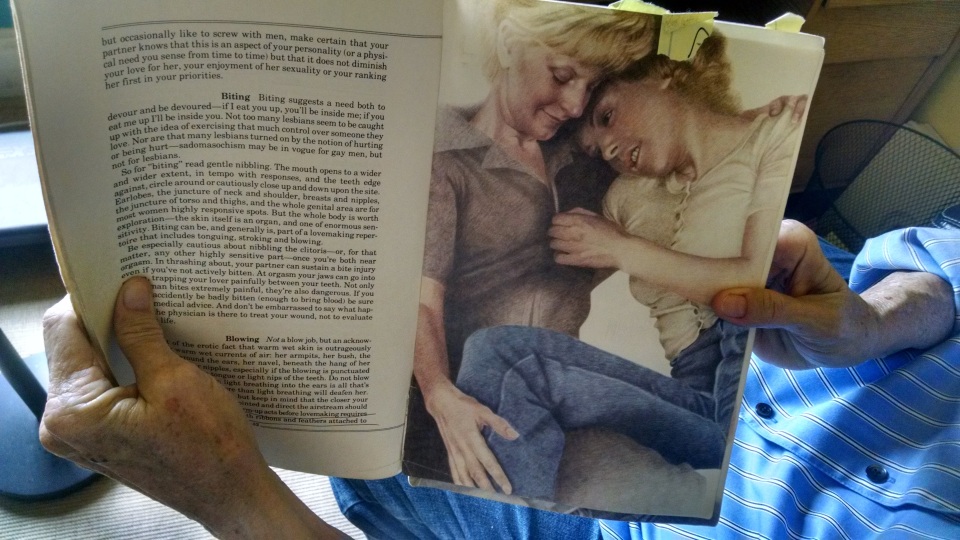
(Marilyn Pittman’s copy of, The Joy of Lesbian Sex)
Pittman marked her favorite sections with post-it notes and started bringing the book on stage with her, reading passages and commenting on them. She didn’t have to do much. One of the first lines reads, “Lesbianism in the popular imagination has been a phenomenon somewhat like China. A vast sequestered territory, at once terrifying and inviting, like China there has been a great wall around the lesbian.”
It devolves from there. By the end of Pittman’s act, she’s dancing a jig, acting out instructions on how to please multiple lovers with one’s feet.
Pittman says the joke was especially potent with lesbian audiences because, “lesbians felt paid attention to and felt that they got to have their sexuality talked about and be made fun of by one of them.”
The joke became Pittman’s signature piece, and she performed it to adoring audiences for years, culminating in a 1999 Boston performance in front of thousands.
This performance would be one of the last times Pittman told the joke on stage for several years. What happened?
Two things:
One, after doing it for more than a decade, Pittman got bored of the joke. She says, “I was so glad not to do it anymore! It was like asking someone to do the hit they had 30 years ago, no they want to focus on the new thing!”
Two, Stand up comedy changed. Comedy in the eighties and nineties relied on characters, props, and acts, but a more stripped-down, authentic storytelling became the norm in the early 2000’s. Pittman’s joke felt old and dated.
But something else happened. The rise of openly gay and queer comedians like Ellen DeGeneres and Margaret Cho helped integrate comedy audiences. Pittman had more opportunities to perform for straight audiences and a new demographic to entertain.
She wanted to prove her joke was universal, so she performed The Joy of Lesbian Sex for a mixed crowd at San Francisco’s Purple Onion in the early 2000’s. Pittman says, “They just went crazy! Heterosexual people felt let in and they got to laugh at lesbians, which everyone wants to laugh at lesbians! It’s about time someone made fun of them and who better than me?”
Now, Pittman rarely performs the joke, except every once in awhile as a special request. She’s developing one-woman shows, promoting her book on voice coaching and thinking about what’s next. The Joy of Lesbian Sex is stashed away, but still marked with post it notes, ready to inform crowds.







